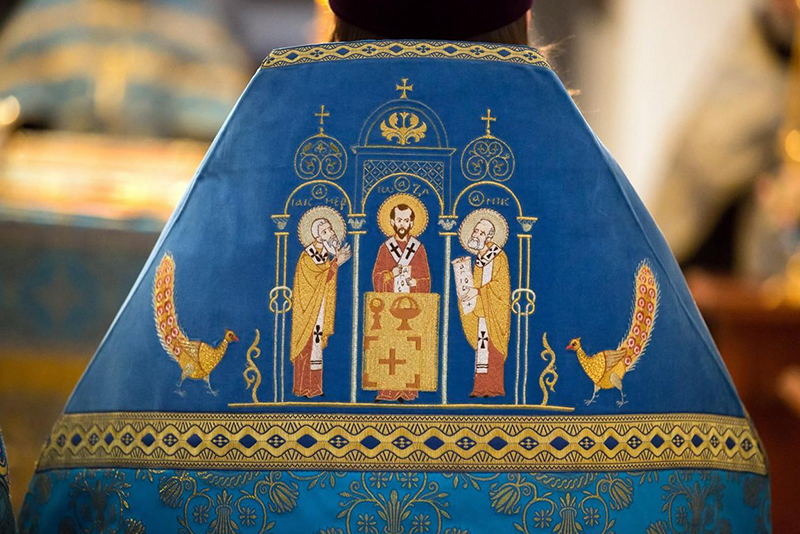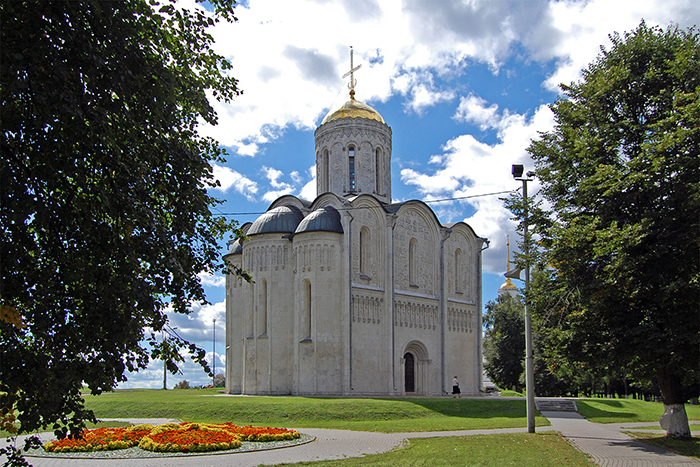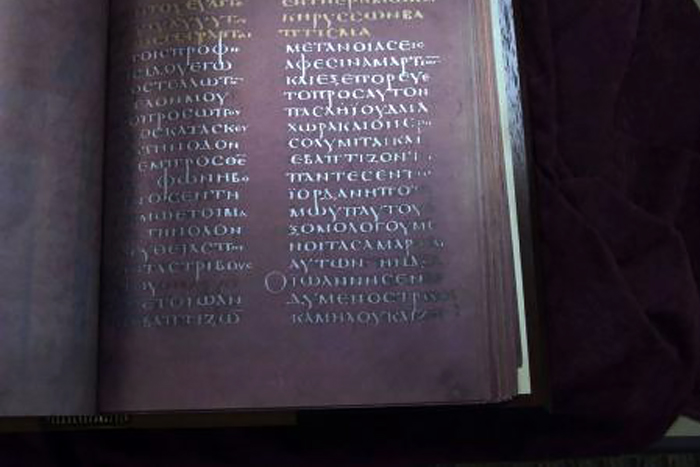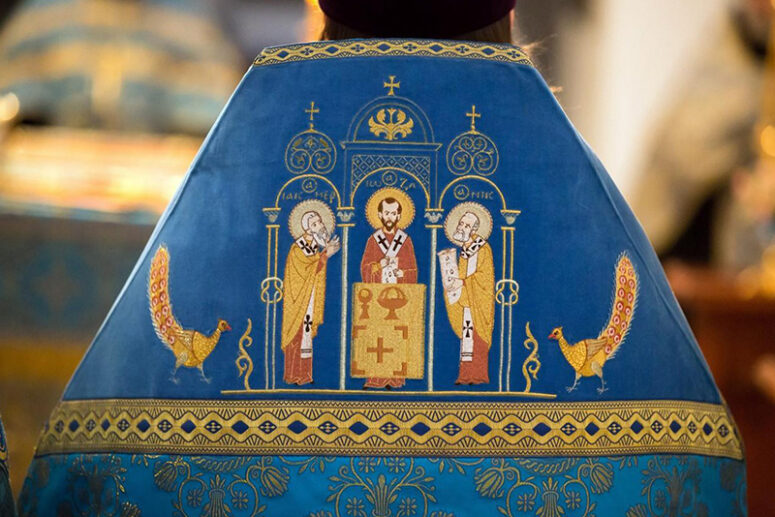
The traditions of decorating church vestments, as well as the history of Russian Orthodoxy in general, are rooted in Byzantium. Unlike secular clothing, the liturgical vestments have not undergone any significant changes since that time and continue following the same canon to this day. In spite of that, historical artifacts, representing different periods of Russian liturgical sewing, differ in many interesting details, such as the choice of fabric, decoration or embroidery. These features were influenced by technical capabilities, as well as the current trends in decorative and applied arts of a particular time.
The Origins of Liturgical Vestments
As you know, liturgical garments for the clergy existed already in the Old Testament. God’s command to create specific elements of vestments using certain materials became known to mankind through Moses. “You shall make sacred vestments for the glorious adornment of your brother Aaron … to consecrate him for my priesthood. These are the vestments that they shall make: a breastpiece, an ephod, a robe, a checkered tunic, a turban, and a sash … they shall use gold, blue, purple, and crimson yarns, and fine linen … This shall be a perpetual ordinance for him and for his descendants after him” (Ex. 28: 1-43).

The introduction of liturgical vestments in the New Testament Christian Church did not happen instantly. During the Last Supper of Jesus Christ, everyone present was in everyday clothes. At the same time, it is known that the Lord’s brother James dressed as a Jewish priest, and the Apostle John the Theologian wore a gold band on his head, an attribute of a high priest. It is also known that the Mother of God sewed an omophorion for the resurrected Lazarus, who became bishop of Cyprus. Despite the fact that the apostles used some elements of church robes, the general canon was not formed until the 6th century.
Some Historical Data on Decorating Liturgical Vestments in Russia
The oldest liturgical vestments kept in Russian museums date back to the 16-17th centuries. Despite their age, these early specimens are real works of art.
Until the 18th century, in the absence of a large domestic manufacturing industry, fabrics for church clothes were purchased in the East and the Western Europe. Russian craftswomen sewed vestments and decorated them with magnificent embroideries, using silk, metal threads, and sometimes precious stones.



In the 18th century, with the development of silk weaving and cotton fabrics production in Russia, less and less clothing materials were purchased abroad.
The luxurious and richly decorated vestments made in the capital and some large Russian Orthodox centers, could not be afforded by rural parishes. In poor churches, robes were sewn using simple fabric and decorated with printed ornaments (stuffed patterns).

Another interesting source of fabric for church vestments is associated with the tradition among the Russian nobles to donate their clothes to the needs of the Church. In the Romanov family, all the brides donated their wedding dresses to the clergy. One of the remaining specimens is a phelonion and epitrachelion set, made of white moire and decorated with embroidery, using metal threads. The inscription on the lining of the phelonion is preserved and says, “From the wedding dress of the Empress Alexandra Feodorovna. Donated in 1842″.
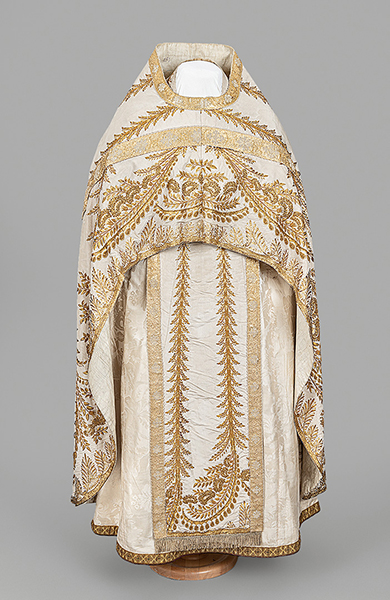
Russian liturgical clothes of the 19th century are especially impressive and varied in their decoration. Arguably, the vestments of this period are characterized by a slight overuse in mixing European and Russian trends and introducing various styles from the past. Velvet and gold embroidery were becoming widespread. To make the gold shine more effectively in the light, craftswomen created a relief by placing cardboard or cotton wool under the embroidery. In addition to the usual crosses, the shoulder pads of priestly vestments are decorated with medallions with hand-embroidered icons of the Savior, the Mother of God, or the Holy Trinity.


One of the impressive mid-19th century specimens is a vestment of purple velvet, almost completely covered with luxurious gold embroidery. It is decorated with a wide variety of images, including the “All-Seeing Eye”, widespread in Russia at that time, and the Order of St Alexander Nevsky, embroidered in the center.

Another unique set of deacon’s and priestly vestments was made in the 20th century to commemorate the 100th anniversary of the Patriotic War of 1812. The robes are decorated in black and orange colors, like the ribbon of St George. But the common stripes are replaced on them by an ancient Greek ornament. St George’s crosses are embroidered in accordance with the canon. The mantle of the phelonion is decorated with a realistic image of the Great Martyr and St George’s ribbon with the order.
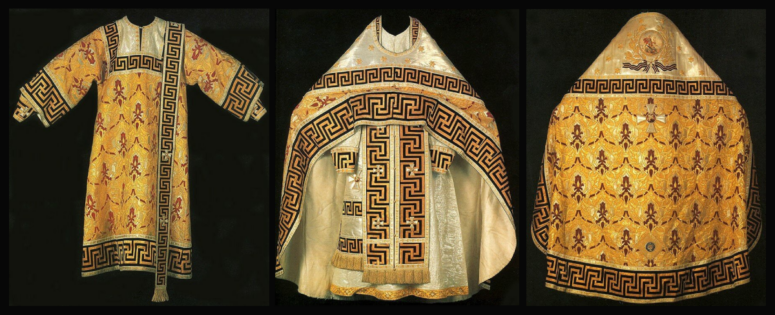
Modern Practice
Today, the creation of church vestments is greatly simplified by modern technology. The Internet provides free access to a wide variety of ornaments used in architecture, art and clothing design of both the Byzantine and Old Russian eras. This helps the artists of the St Elisabeth Convent’s sewing workshop to design unique embroidery patterns on the computer, harmoniously combining different traditions and styles, with the final goal of creatign a new beautiful vestment.

Specialized machines can create embroidered appliqués with any pattern, using metallic threads. This allows us to implement almost any customer’s request in a brief period of time.
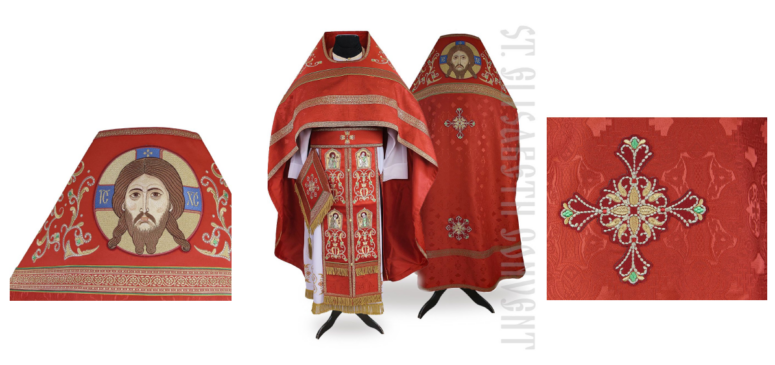
The workshop uses church and decorative fabrics, such as velvet, silk, calico and linen. Embroidery patterns for icons are developed by icon painters, and then embroidered by machine or hand.

The history of church vestments stretches back many, many millennia. Today, through these vestments the Church continues to pass the tradition and canon down to the new generation, fulfilling God’s command and glorifying Him with the beauty of Divine services.

